Every March the 17th English speakers celebrate Saint Patrick’s Day all around the world. Originally it was the National Holiday of Ireland, but as a result of the massive migration of Irish people especially to other English speaking countries such as the USA, Canada or Australia, it has become one of the most celebrated festivals not only for Irish people but also for English speakers. Following the Irish tradition and therefore their Gaelic roots all around Ireland and Scotland, students and teachers of 1st BTX have celebrated Saint Patrick’s Day dancing céilidh, under the expertise and supervision of the artist David Vivancos.
A Céilidh is the traditional Gaelic social dance in Scotland, Ireland and Atlantic Canada. Other spellings encountered
are ceilidh, céilí (Irish reformed spelling) and cèilidh (Scottish Gaelic reformed spelling). Before discos and
nightclubs, there were Céilidhs in most town and village halls on Friday or Saturday nights; they are still common
today.
Originally céilidhs facilitated courting and prospects of marriage for young people and although discos and
nightclubs have displaced céilidhs to a considerable extent, céilidhs are very popular in rural parts of Ireland and in
Scotland (especially in the Gaelic-speaking west coast regions).
It is common for some clubs and institutions such as sports clubs, schools and universities and even employers to
arrange céilidhs on a regular or at least annual basis. The formality of these can vary. Some mix modern pop music
with a Scottish country dancing band and dress codes range from compulsory Highland Dress to informal clothing.
Knowledge and use of the basic dance steps is not always strictly necessary and dances often alternate with songs,
poetry recitals, and story telling.
Céilidh music is often provided by an assortment of fiddle, accordion, flute, tin whistle, pipes, bodhrán (Irish drum)
and in more recent times also percussion and electric bass guitar. The music is cheerful and lively and the basic steps
can be learned easily; a short instructional session is often provided for new dancers before the start of the dance itself.
The general format for céilidh dancing is a ‘Set’ (line of couples facing their partners). Square set dances also exist.
However, about half of the dances in the modern Scots céilidh are couple dances performed in a ring. These can be
performed by fixed couples or in the more sociable “progressive” manner, with the lady moving to the next gentleman
in the ring at or near the end of each repetition of the steps.
In the last 15 years, the Scottish public céilidh seems to have grown again in popularity amongst young people. Since
then a subculture in some Scottish cities has evolved where some people attend céilidhs on a regular basis and at the
céilidh they find out from the other dancers when and where the next céilidh will be.
Privately organised céilidhs:
These bands vary in size, although they are commonly made up of between 2 and 6
players. The appeal of the Scottish céilidh is by no means limited to the younger generation and dances vary in speed
and complexity in order to accommodate most age groups and levels of ability.
Some céilidh bands intersperse céilidh dancing with a DJ playing disco music in order to broaden the appeal of the
evening’s entertainment.
Modern céilidh dancing generally includes a mixture of four styles: Scottish country dancing, Old time dancing,
Ballroom dancing and International folk dances.
are also extremely common now and bands are often hired to play at dances held to
celebrate weddings and birthdays.
Celebrate Saint Patrick’s Day dancing céilidh, singing and speaking English with your friends all over the world. We are sure there is a bit of Gaelic ancestry in each one of you.
1st BTX students and teachers dancing céilidh
More dancing with 1st BTX students and teachers
David Vivancos playing the bagpipe
David Vivancos playing the guitar and singing

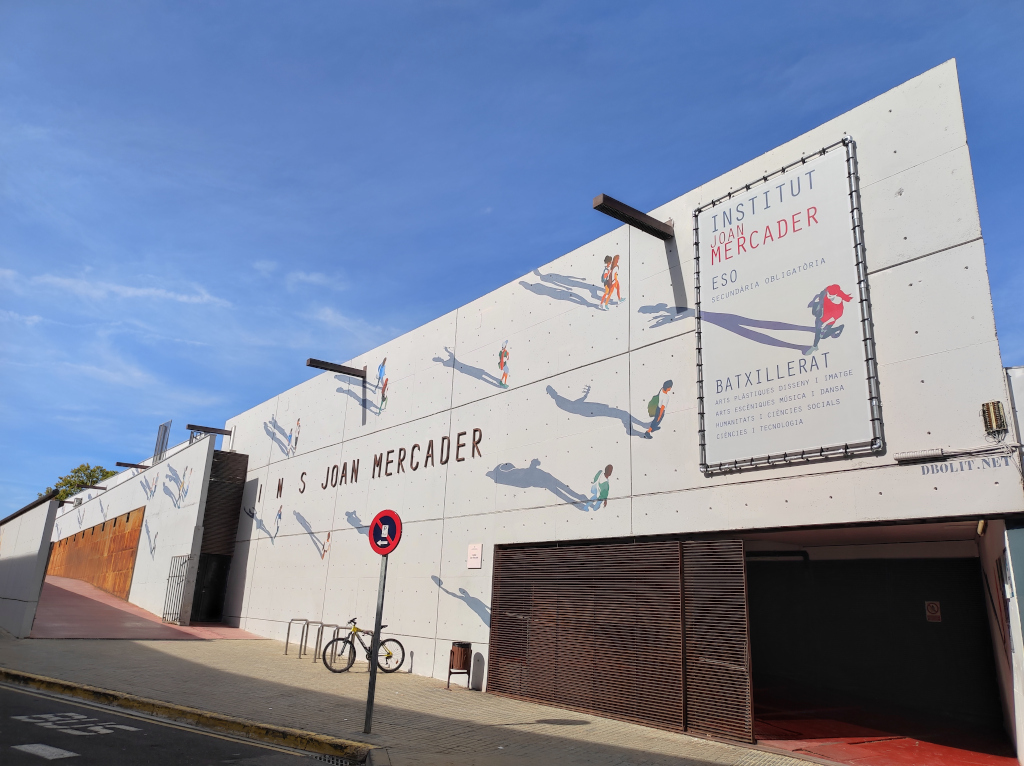



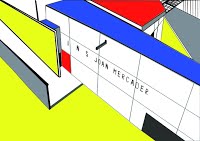

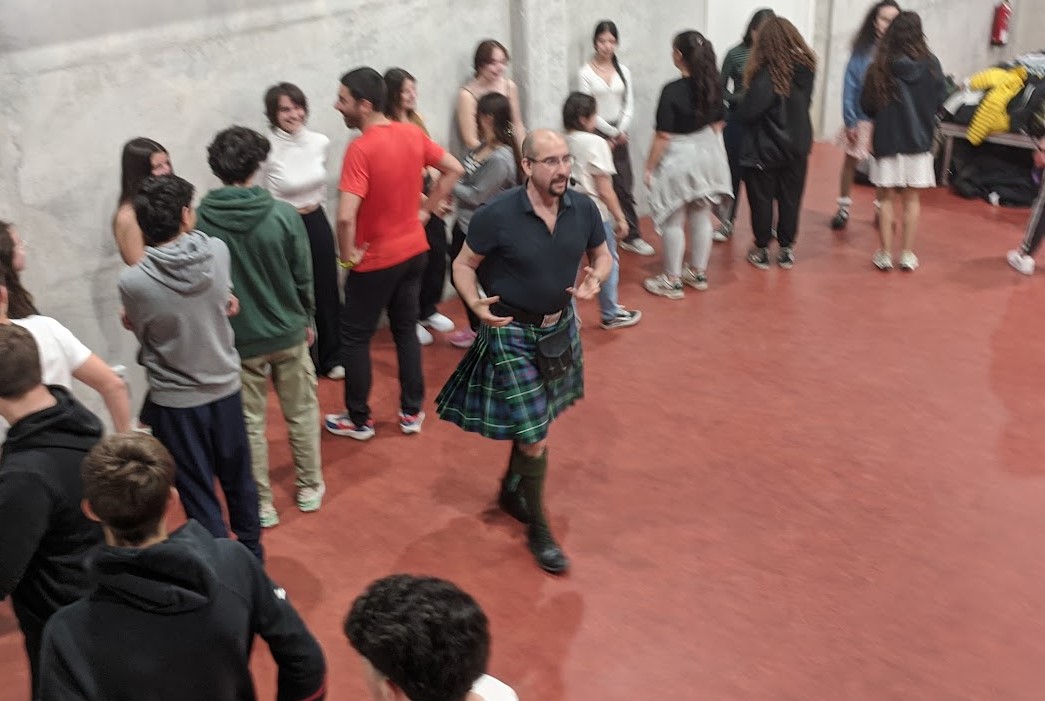

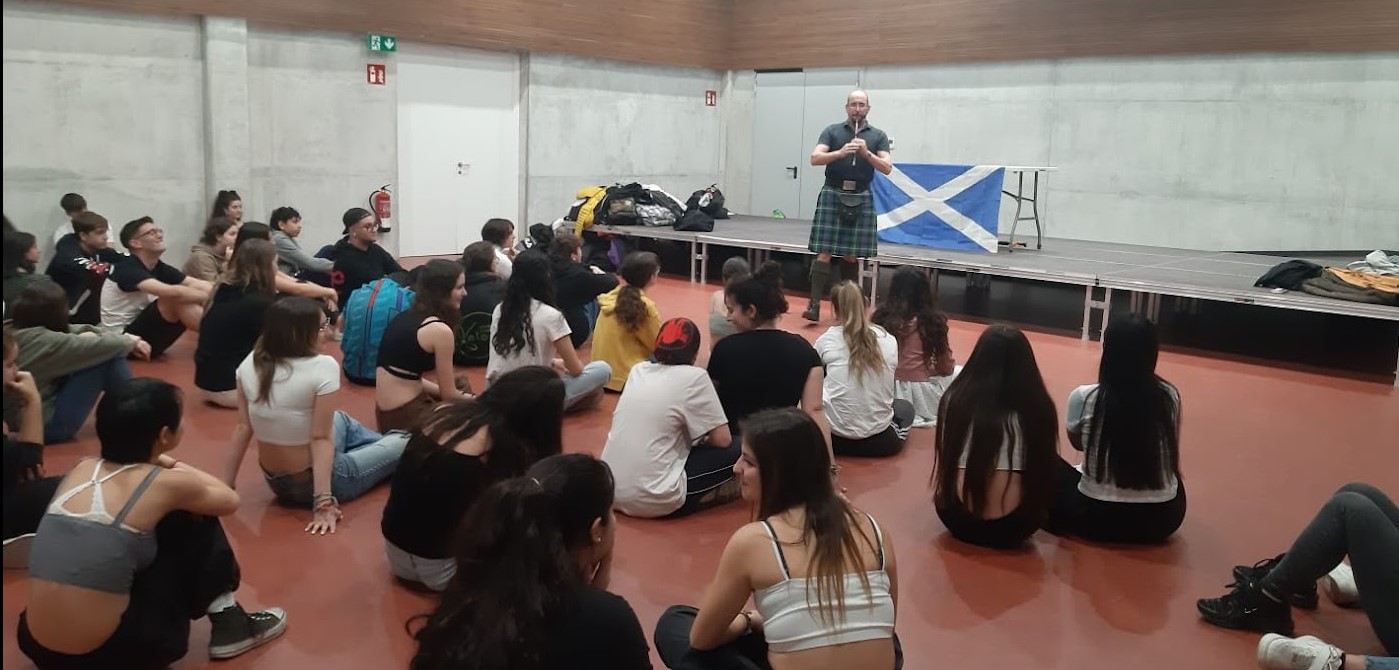

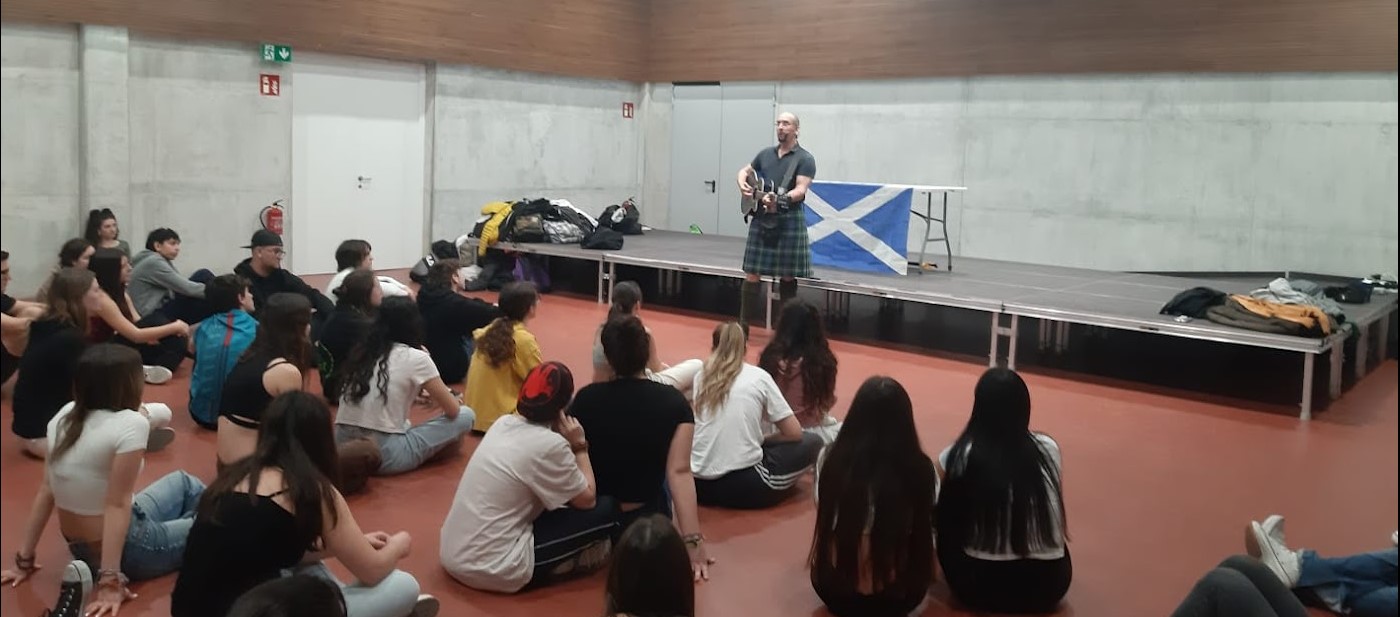
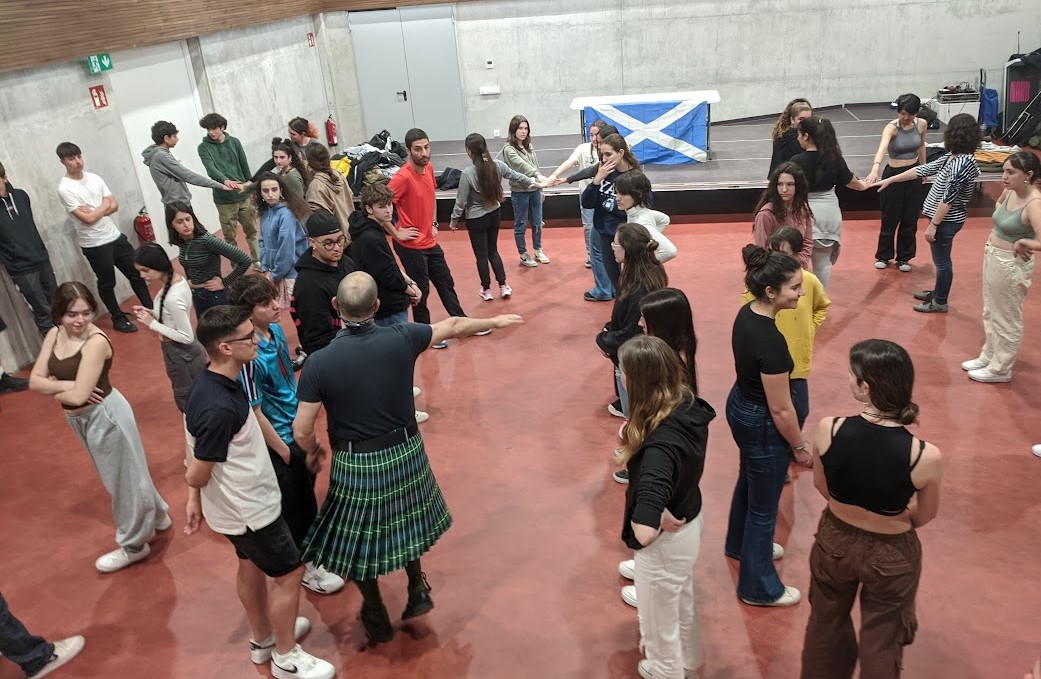

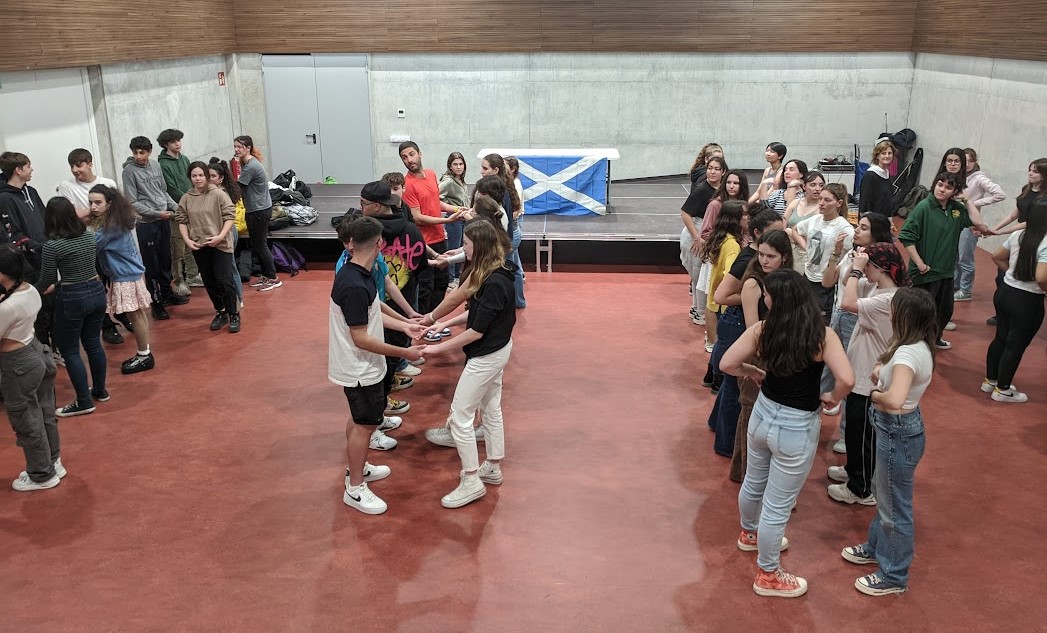



Comentaris recents